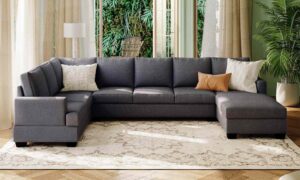Architecture has always evolved alongside technology, culture, and the ways we live. From minimalist modernism to sustainable smart homes, design trends reflect the shifting priorities of society. But today, a new transformation is emerging — morphing design — a concept that blurs the boundaries between adaptability, sustainability, and artistic expression.
Morphing design isn’t about static walls or rigid layouts; it’s about creating homes that respond — to people, seasons, and needs. It’s the next step in architecture’s long journey toward spaces that live and breathe with us.
What Is Morphing Design?
At its core, morphing design refers to dynamic architecture — structures that can shift, expand, or reconfigure based on context. Imagine walls that slide to create open layouts during the day, or roofs that tilt to optimize solar gain in winter and shade in summer. This philosophy turns the home into a living system, capable of adapting to changing conditions rather than resisting them.
It’s a departure from the traditional view of architecture as permanent and fixed. Instead, morphing design embraces flexibility as a core value — buildings that grow, transform, or even learn from their inhabitants over time.
The Inspiration Behind the Movement
The idea of adaptable architecture isn’t entirely new. Visionaries like Buckminster Fuller and Zaha Hadid toyed with fluid, organic forms decades ago. What’s changed is the technology that makes these ideas achievable.
Advances in smart materials, robotics, and modular construction now allow architects to design homes that physically morph. Responsive facades adjust transparency to light conditions, while flexible interiors allow families to redefine space with a few gestures. It’s a fusion of digital intelligence and human comfort — design that’s functional and emotional in equal measure.
Architectural innovators are now leading the way in exploring these hybrid concepts. Platforms such as www . kdarchitects.net showcase how adaptive design ideas are reshaping modern living — from fluid spaces that can transform in real time to homes that merge natural materials with futuristic geometry. The firm’s work illustrates that morphing design is not about complexity for its own sake, but about giving architecture the power to respond meaningfully to its environment.
Adapting to Modern Lifestyles
Today’s homes need to do more than ever before. Remote work, multigenerational living, and climate-conscious design have pushed architects to reconsider what “home” means. A morphing design approach provides answers to many of these demands.
Movable partitions can convert a large open space into private offices or guest rooms. Adjustable ceilings and rotating panels can shift acoustics and lighting throughout the day. Furniture is no longer static — it folds, expands, and transforms to support changing needs.
In short, a morphing home reflects how we live now: fluidly, flexibly, and connected to both nature and technology. For anyone curious to see how these evolving ideas appear in real-world structures, take part in architecture. Homeowners and design enthusiasts exploring these evolving trends often turn to architectural tours to experience firsthand how modern spaces adapt, transform, and respond to lifestyle needs.
Technology as a Design Partner
Technology isn’t just enabling morphing architecture — it’s becoming an active design partner. Artificial intelligence and parametric modeling allow architects to simulate countless variations before a single wall is built. Sensors and smart home systems let spaces react to environmental data — adjusting temperature, airflow, and even layout based on real-time inputs.
Materials are evolving too. Shape-memory alloys, bioplastics, and responsive textiles are making it possible for architecture to move without machinery. These innovations make morphing homes sustainable as well as dynamic — buildings that consume less energy by adapting naturally to their surroundings.
Sustainability Through Flexibility
Morphing design has profound implications for sustainability. A flexible home is inherently more durable because it can evolve with its occupants. Rather than demolishing or rebuilding when needs change, homeowners can reconfigure existing structures.
This adaptability reduces waste and extends a building’s lifespan. It also helps architecture work with nature rather than against it — shading itself in summer, opening to breezes, or harvesting solar energy at optimal angles. Morphing design transforms sustainability from a static goal into a continuous process.
The Emotional Dimension of Adaptive Spaces
Beyond technology and efficiency, morphing design also redefines how we feel about space. Living in a home that changes with your daily rhythm fosters a stronger emotional connection to it. Morning light filtering through an adjustable facade or walls that shift to create intimate evening zones make the home feel alive.
This human-centered approach turns architecture into an experience rather than an object. It prioritizes comfort, creativity, and personal expression — qualities that resonate deeply in an era where the home is more than just shelter; it’s identity.
Challenges and the Road Ahead
Of course, morphing architecture comes with challenges. The technology can be expensive, maintenance requires expertise, and local building codes don’t always accommodate dynamic designs. There’s also a philosophical question: how much adaptability do people actually want in their living spaces?
But just as glass, steel, and automation once revolutionized construction, so too will morphing materials and responsive systems. As costs drop and awareness grows, these concepts are expected to move from luxury projects to everyday homes.
Final Thoughts
The future of home architecture is fluid. Morphing design is leading the shift from buildings as static objects to buildings as living participants in our daily lives. It reflects a deeper harmony between people, technology, and nature — one that redefines how we inhabit the world.
By blending engineering with empathy, morphing design creates spaces that evolve alongside us. Whether it’s walls that breathe, rooms that transform, or roofs that respond to light, the message is clear: the homes of tomorrow won’t just shelter us — they’ll move with us.

































